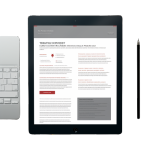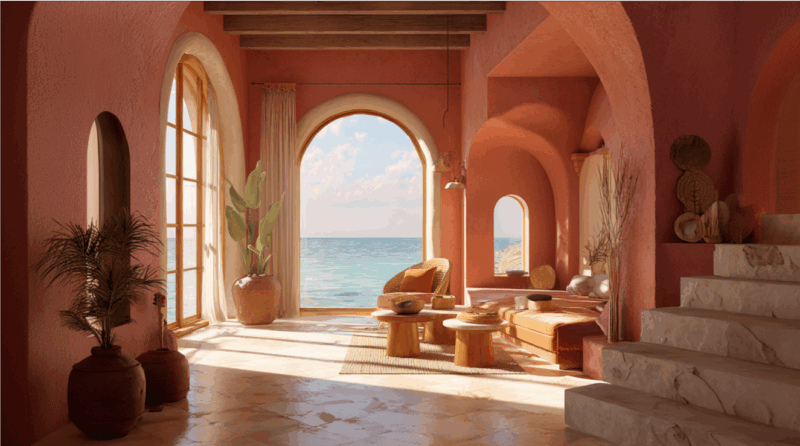Prices do not follow attendance
Tendances France Juillet 2025 par Hospitality ON
While the national occupancy rate rose by 2.3 points to 73.2% in July, the average daily rate went in the opposite direction, falling by 8%. No category was spared by this downward pricing trend, with the upscale segment being just as affected as the entry-level segment (-8.3%) after months of impressive growth.
Despite this, the upscale segment posted the smallest decline in RevPAR (-1.3%), buoyed by a strong increase in its occupancy rate (+5.7 points). The segment owes this sustained activity to the strong presence of international clientele, particularly on the French Riviera.
According to Côte d’Azur France Tourisme, international visitors accounted for 55% of hotel guests in July. Foreign visitors were predominantly American travellers, a market considered essential to the Côte d’Azur’s tourism economy with an estimated average daily expenditure of €170 per person compared to €75 for French tourists.
This international clientele also benefits the hotel industry in the Paris region, which has seen a 5.3 point increase in its occupancy rate. Once again, American guests are filling Parisian luxury hotels and palaces, as are Asian guests. Air arrivals from these two countries have been on the rise since 2023, according to Paris Je T’aime, with increases of +2.8% and +6.4% respectively.
Changing holiday habits
Tendances Régions Juillet 2025 par Hospitality ON
This summer season has been marked by new behaviours among French and European tourists alike. As Vanguélis Panayotis, CEO of MKG Group, recently explained, “Holidaymakers are changing their habits. Purchasing power is leading them to choose new, less expensive destinations.”
This new approach to summer holidays is benefiting the provinces, which, unlike the Ile-de-France region and Paris, have seen their RevPAR increase in July (+2.7% vs 2024 and +9.8% vs 2023).
Climate change is thus highlighting destinations that were previously neglected during the summer, becoming the muses of the ‘coolcation’ trend, such as Normandy and Brittany, where RevPAR increased by +12.6% and +9.2% respectively. These increases are well above those posted by destinations that are traditionally more popular at this time of year, such as Provence-Alpes-Côte-d’Azur (+4.2%), Occitanie (+1.6%) and Nouvelle-Aquitaine (+0.9%).
The destinations that drove French hotel growth during the first quarter of the year now find themselves in very different positions. Indeed, Ile-de-France and Hauts-de-France recorded the largest declines in RevPAR (-14.7% and -7.5%). This difference can be attributed to the Olympic and Paralympic Games, which drove up prices in these regions. Despite the Tour de France starting in Lille this year, holidaymakers’ budgets no longer allow for the same level of yield management.
Only three regions saw a slight decline in visitor numbers (Hauts-de-France, Auvergne-Rhône-Alpes and Bourgogne-Franche-Comté), while the rest of the panel posted more or less significant increases. These figures clearly illustrate the greater dispersion of visitor flows mentioned by Vanguélis Panayotis on BFM TV.
“Black Saturdays, holiday traffic jams and “human transhumance” are terms that now belong to the past. Holiday habits have changed, driven by purchasing power but also by the desire not to waste two days in traffic jams.” – Vanguélis Panayotis, CEO of MKG Group
What about urban tourism in the face of heat waves?
Tendances Villes Juillet 2025 par Hospitality ON
This search for cooler temperatures away from the crowds is also reflected in the performance of France’s major cities. A number of them saw their RevPAR decline in July, including Paris (-14.6%), Lille (-14.3%), Lyon (-8%) and Marseille-Aix-en-Provence (-8.2%).
These are all cities where temperatures rose sharply during the summer month, easily exceeding 40°C. These heatwaves redistributed tourist flows to cities less prone to heatwaves.
Among these alternative urban destinations are Strasbourg, Rouen and Rennes, which are among the few cities to have recorded higher occupancy rates than in July 2024. These three cities have benefited from a rich and eclectic events calendar, with Rouen hosting the finish of the fourth stage of the Tour de France.
It is not only the more moderate temperatures that have contributed to the growth of these destinations. As they are not among the classic summer destinations, the prices charged in these cities have won the hearts and, above all, the wallets of travellers on a tight budget this year.
To find out more about hotel performance across Europe, click here.

![]()







